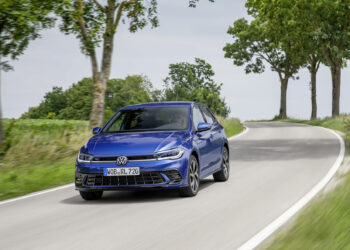The new cars sold in Europe are larger and heavier, jeopardizing climate targets for transportation and increasing danger in cities, indicates a study by the European Federation for Transport and Environment (T&E).
The study was released this Thursday in a statement from the Portuguese environmental association “Zero“, which is part of T&E. The document states that the height of the hoods of new cars sold in Europe is increasing, on average, by half a centimeter per year, a growth associated with the rise in sales of SUVs (Sport Utility Vehicles).
This, the authors of the document indicate, compromises road safety in urban environments. Because being larger and heavier increases the risk of death in the event of a collision, provides less visibility for pedestrians and drivers, and fosters a false sense of security among drivers.
In a collision, SUVs and “pick-up” trucks tend to hit adult pedestrians severely in the vital organ area, while lower hoods tend to strike pedestrians in the legs. Last year, “Zero” indicates in the document, European consumers purchased 6.92 million SUVs, achieving a record market share of 54%.
Due to their size and weight, SUVs are fuel-inefficient vehicles and have been the best-selling vehicle segment in Europe and the fastest-growing (in 2010 they represented 12% of the market), to the extent that carbon dioxide emissions from new cars increased in 2024 compared to 2023.
“Zero” and other European environmental associations are calling on the European Union and the United Kingdom to establish a maximum height limit of 85 centimeters for the hoods of new cars after 2035.
They are also requesting that the European Commission present a legislative proposal by July 2027 that includes measures such as the Single Automobile Document containing the hood height, or that the visibility of children from new cars be taken into account.
Tests conducted with certain SUVs as part of the study reveal that drivers of these models are unable to see a child standing under nine years old who is directly in front of the vehicle.
Based on an analysis of 300,000 accidents in Belgium, it is known that an increase of 10 cm in hood height (from 80 to 90 cm) represents a 27% increase in the risk of death for pedestrians and cyclists. Additionally, collisions between lighter cars and high-front SUVs increase the risk of serious injuries to drivers of smaller and lighter vehicles by 20 to 50%. Pub
In the statement, “Zero” urges the Portuguese government and local and central authorities to adapt taxation and parking fees to discourage the use of these vehicles.
According to “Zero,” the increase in the number of SUVs with high fronts represents a growing threat to urban public safety and has no benefit for society, and therefore the environmental association argues that it is necessary to “limit the height of the hood as a simple and effective measure to protect all users of public roads and contain the spread of large vehicles”.










